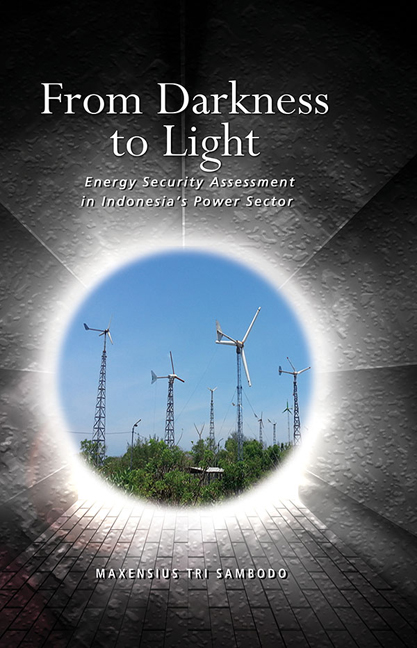Book contents
- Frontmatter
- Dedication
- Contents
- List of Tables
- List of Figures
- List of Abbreviations
- Acknowledgements
- 1 Introduction
- 2 A Historical Overview of the Electricity Sector
- 3 Electricity Production and Consumption: Boom and Bust
- 4 Economic Crisis and Its Impact on the Power Sector
- 5 Electricity and Economic Growth
- 6 Electricity and the Environment
- 7 The Rural Electricity Programme in Indonesia
- 8 Conclusion
- Index
- About the Author
2 - A Historical Overview of the Electricity Sector
Published online by Cambridge University Press: 05 July 2016
- Frontmatter
- Dedication
- Contents
- List of Tables
- List of Figures
- List of Abbreviations
- Acknowledgements
- 1 Introduction
- 2 A Historical Overview of the Electricity Sector
- 3 Electricity Production and Consumption: Boom and Bust
- 4 Economic Crisis and Its Impact on the Power Sector
- 5 Electricity and Economic Growth
- 6 Electricity and the Environment
- 7 The Rural Electricity Programme in Indonesia
- 8 Conclusion
- Index
- About the Author
Summary
Since the past influences the institutional setting of the power sector in Indonesia, understanding the history of the electricity sector will help us understand the current situation and analyse the future path. This chapter briefly describes the conditions of organizational and institutional settings of the electricity sector in Indonesia, starting from before the Independence to the present. The pre-Independence period, before the Second World War, and the Japanese Occupation will be discussed. After the Independence period, there are three important periods in the electricity sector, according to the Ministry of Energy and Mineral Resources (DPE 2000): (i) 1945–50 (the formation of electricity and gas department); (ii) 1951–67 (the nationalization and organizational growth of Dutch electricity companies); and (iii) 1968–2014. In addition, between 1961 and now, there are three important organizational changes that need to be discussed: (i) the formation of State Electricity Company Management Agency (Badan Pimpinan Umum Perusahaan Listrik Negara/BPU-PLN) in 1961; (ii) the formation of Perusahaan Umum Listrik Negara in June 1972; and (iii) the formation of PT. PLN (Persero) (limited company) in June 1994. This chapter analysed the critical elements from each of these episodes of history.
THE PRE-INDEPENDENCE PERIOD
The first electricity trading company in Indonesia (Netherlands East Indies) was established in May 1897 by the Netherlands Indies Electricity Company (Netherlandsch-Indisch Electriciteit Maatschappij/ NIEM) in Batavia. However, according to McCawley (1971, p. 1), the Dutch plantation companies had developed power generation for their own use even before that time. Developing power generation was important for Dutch companies to run businesses such as sugar factories, tea factories, and other plantations (DPE 2000). Most of these commodities were intended for the export market (see Table 2.1). Hydropower was an important source of power supply for Dutch companies because it required the least cost based on the state of technology at that time and there were abundant supplies of water.
Following the 1890 Ordinance No. 190 dated 13 September 1890, Dutch private sector companies could operate electricity business for public utilities (DPE 2000).
- Type
- Chapter
- Information
- From Darkness to LightEnergy Security Assessment in Indonesia's Power Sector, pp. 7 - 45Publisher: ISEAS–Yusof Ishak InstitutePrint publication year: 2016



